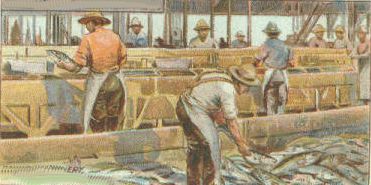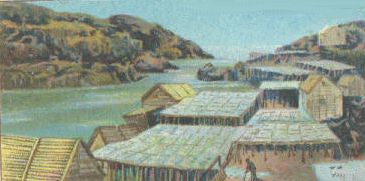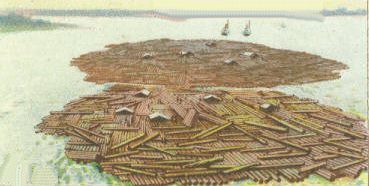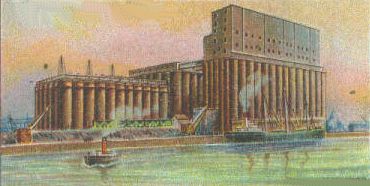Canadian
Research
Alberta
British
Columbia
Manitoba
New Brunswick
Newfoundland
Northern
Territories
Nova Scotia
Nunavut
Ontario
Prince Edward
Island
Quebec
Saskatchewan
Yukon
Canadian Indian
Tribes
Chronicles of
Canada
Free Genealogy Forms
Family Tree
Chart
Research
Calendar
Research Extract
Free Census
Forms
Correspondence Record
Family Group Chart
Source
Summary New Genealogy Data
Family Tree Search
Biographies
Genealogy Books For Sale
Indian Mythology
US Genealogy
Other Websites
British Isles Genealogy
Australian Genealogy
  
FREE Web Site Hosting at
Canadian Genealogy
|
Life in the Provinces
These images are taken
from Wills's Cigarettes of England. They were issued by the
Imperial Tobacco Co of Great Britain and Ireland. 1914
 |
 |
|
Salmon
Cannery, Fraser River
British Columbia, with its 7,000 miles of coastline, and
its 220,000 sq. miles of fresh water lakes, is one of
the largest and most prolific fishing grounds in the
world. The total output of fish for 1911 was valued at
11 million dollars, the number of men employed being
over 17,000. In the fishing season the waters of the
Fraser River for miles are covered with hundreds of
boats attached to the fishing fleet. |
Salmon
Cannery, British Columbia
To encourage the fishing industry and prevent the
depletion of the rivers, the depletion of the rivers,
the Dominion Government has established fish hatcheries
for the artificial propagation of salmon. The canneries
on the Fraser R. are fully equipped with large cold
storage plants, and labor saving machinery such as the
"Iron Chink," for cleaning and cutting the fish. The
Fraser R. canneries can deal with ten million salmon per
year. |
 |
 |
|
Drying Cod
The fishing grounds off the Atlantic Coast of North
America provide employment for some 30,000 persons
during the summer months. On the shores of the
picturesque fiords of Labrador the fish are cleaned and
cured with salt. They are then spread on "stages" and
exposed to the action of sun and wind. The "stages" are
hurdles covered with boughs of fir or spruce, and
supported on strong stakes some feet above the ground. |
A Brick Yard
The extraordinary agricultural development of Western
Canada has called into being hundreds of new
settlements. At first these are merely collections of
wooden shanties, but these rough structures in a short
time become quite inadequate. Brickyards are started
where suitable clay can be found, and then commences a
busy time making the bricks to be used for the more
substantial buildings required for the rapidly growing
towns. |
 |
 |
|
Timber
Raft
Our picture shows a typical lumber raft on one for the
great Canadian waterways. Some of these rafts are
half-a-mile in length, and contain as much as £90,000
worth of timber. The lumbermen for lumberjacks as they
are termed, are mostly French Canadians, though many
Swedes and Scots are to be found among them. These men
live on the raft in rough shanties built of wood. |
Grain
Elevator, Fort William
At Fort William, on Lake superior, is the largest
grain-elevator of its kind in the world, with storage
capacity of 40 million bushels. Fort William is the
"gate-way of Canada,: for through this great lake port
all grain and produce of W. Canada must pass on its way
east. It is also the lake terminus of three railways-the
Grand Trunk Pacific, the Canadian Pacific, and the
Canadian Northern. |
Previous |
Index |
Next
Canadian Genealogy |